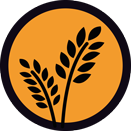AREA OF EXPERTISE

Food security and livelihood

AREA OF EXPERTISE

Food security and livelihood
FUNDING
The fact that 2008's production is approximately only 30% of the usual production, and the damage caused by the cyclone, make recruitment and payment (in rice) of the day-workers complicated, especially in terms of the next rainy season's crops.
Food safety is still volatile owing to lack of production means and difficult access to food (the roads, bridges and paths to villages are severely damaged). Development projects will seek to alleviate such issues but there will be a gap in terms of food distribution. TGH is addressing this gap and improving food security in the households most affected by Nargis with a project adapted to the humanitarian action unrolling in the entire region.
The specific objectives of the project are:
Activities: